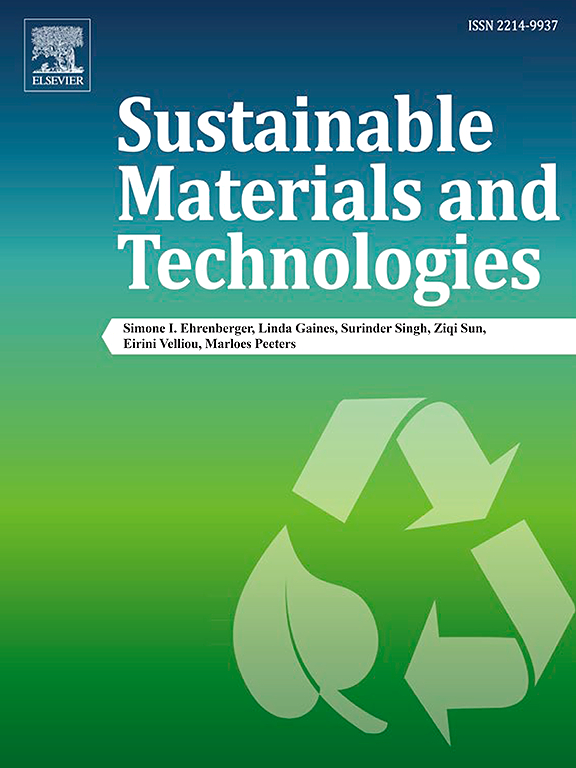Eco-friendly and cytocompatible graphene composite based on water-soluble biopolymers for modern printed electronics and beyond
IF 8.6
2区 工程技术
Q1 ENERGY & FUELS
引用次数: 0
Abstract
A growing demand for sustainable electronics has emerged to facilitate electronic waste management, reduce the use of toxic materials and minimize environmental impact, along with enabling the development of new applications. In this study, six biopolymers — sodium alginate (SA), sodium carboxymethyl cellulose (CMC), hydroxyethyl cellulose (HEC), methylcellulose (MC), sea-source water-soluble chitosan hydrochloride (CS), and fungal water-soluble chitosan (CF) — were investigated as polymer binders for sustainable, highly conductive, and cytocompatible graphene-based composites for screen printing applications. The study focused on optimizing graphene dispersion in water solutions using SDS surfactant and two distinct sonication methods to enhance printability, surface coverage, and conductivity. Rheological tests and surface tension analyses characterized the composites, which were primarily printed on paper substrates to achieve biodegradable structures. Electrical tests, SEM and microscopic imaging identified the probe sonication method as more effective in the deagglomeration of graphene. CMC-based layers exhibited the lowest resistance (58 Ω/□), followed by HEC-based and SA-based. Accelerated aging tests showed minor changes in resistance, indicating a 1-year shelf life. Cytotoxicity tests indicated the potential use of these composites in medical devices in contact with human skin. The findings highlight the promising applicability of natural biopolymers as sustainable polymer matrices in developing biodegradable electronics and reducing environmental impact.

求助全文
约1分钟内获得全文
求助全文
来源期刊

Sustainable Materials and Technologies
Energy-Renewable Energy, Sustainability and the Environment
CiteScore
13.40
自引率
4.20%
发文量
158
审稿时长
45 days
期刊介绍:
Sustainable Materials and Technologies (SM&T), an international, cross-disciplinary, fully open access journal published by Elsevier, focuses on original full-length research articles and reviews. It covers applied or fundamental science of nano-, micro-, meso-, and macro-scale aspects of materials and technologies for sustainable development. SM&T gives special attention to contributions that bridge the knowledge gap between materials and system designs.
 求助内容:
求助内容: 应助结果提醒方式:
应助结果提醒方式:


